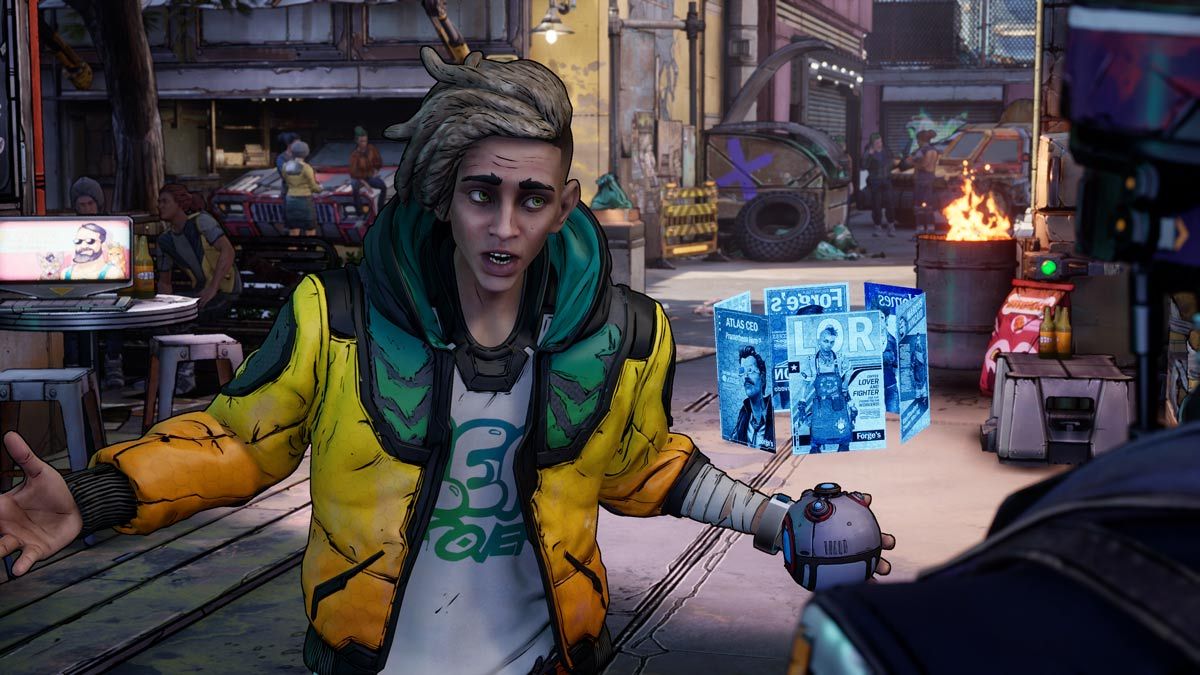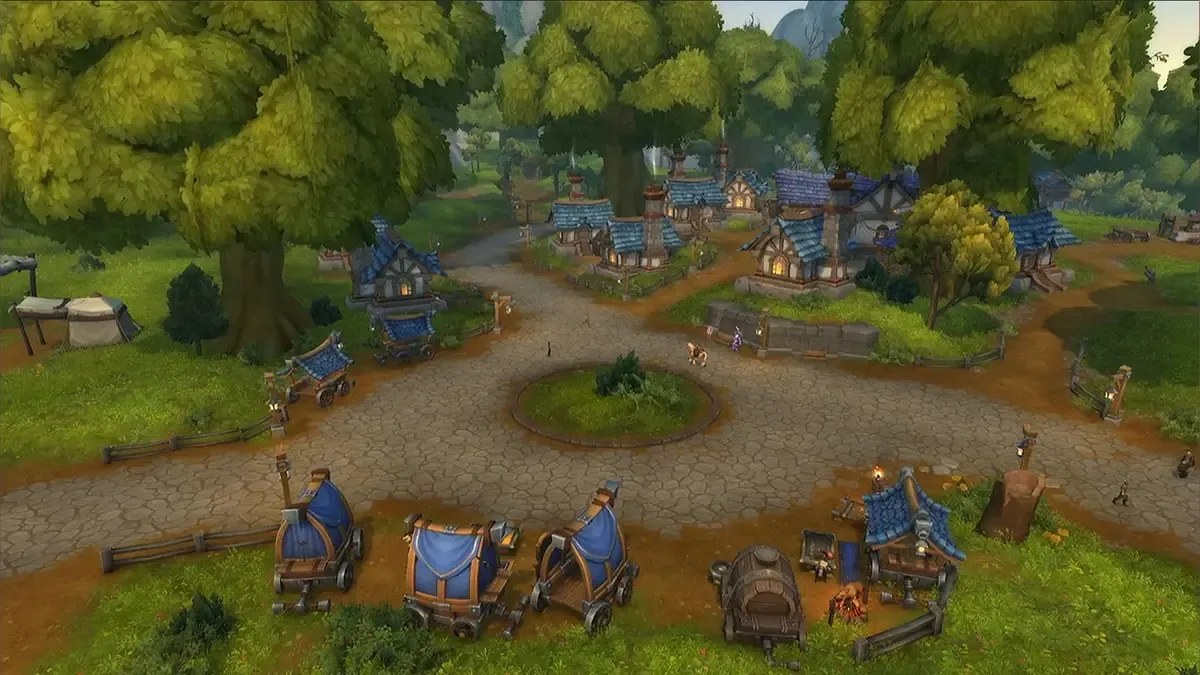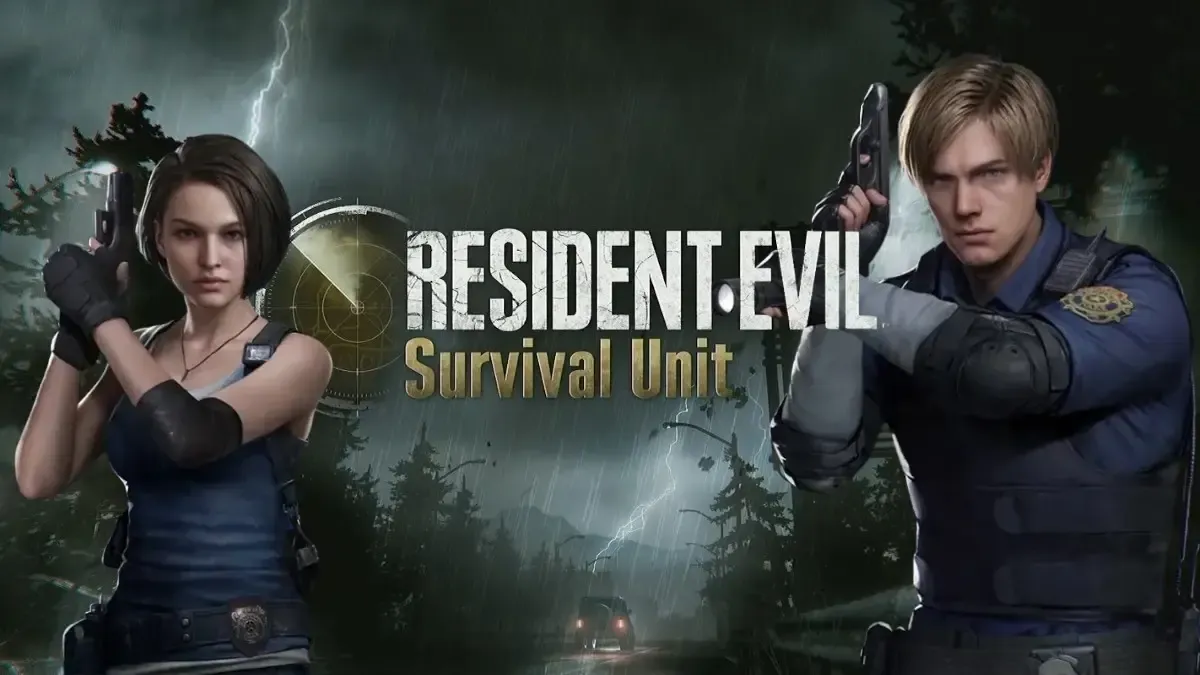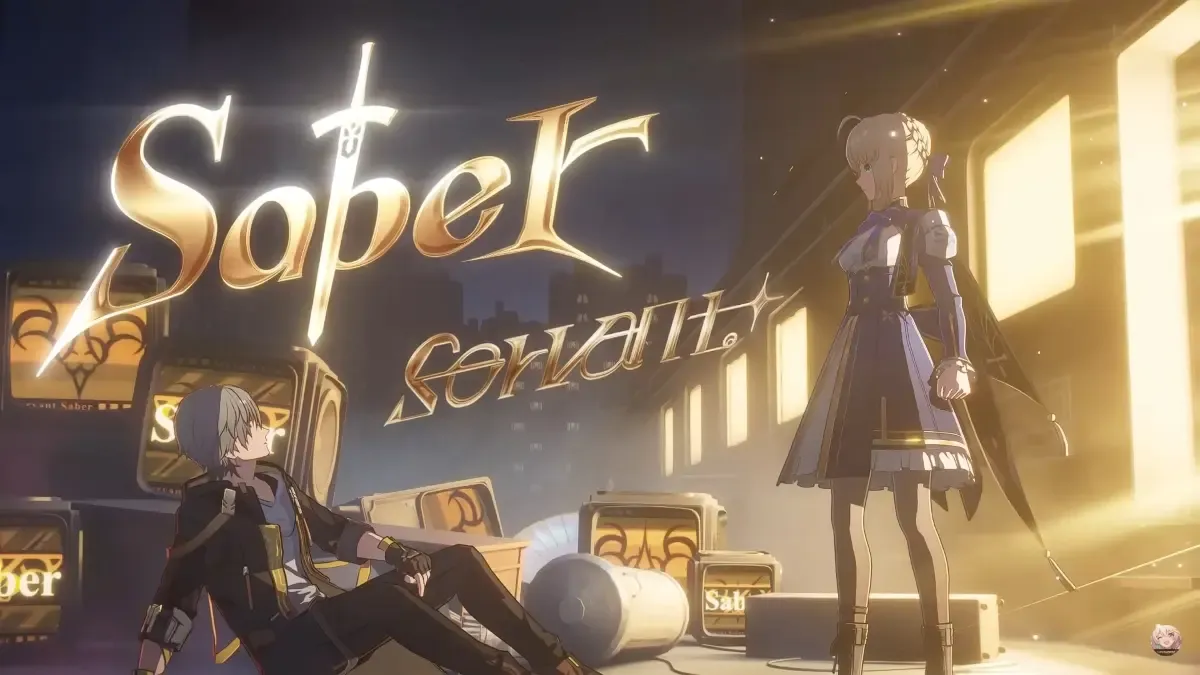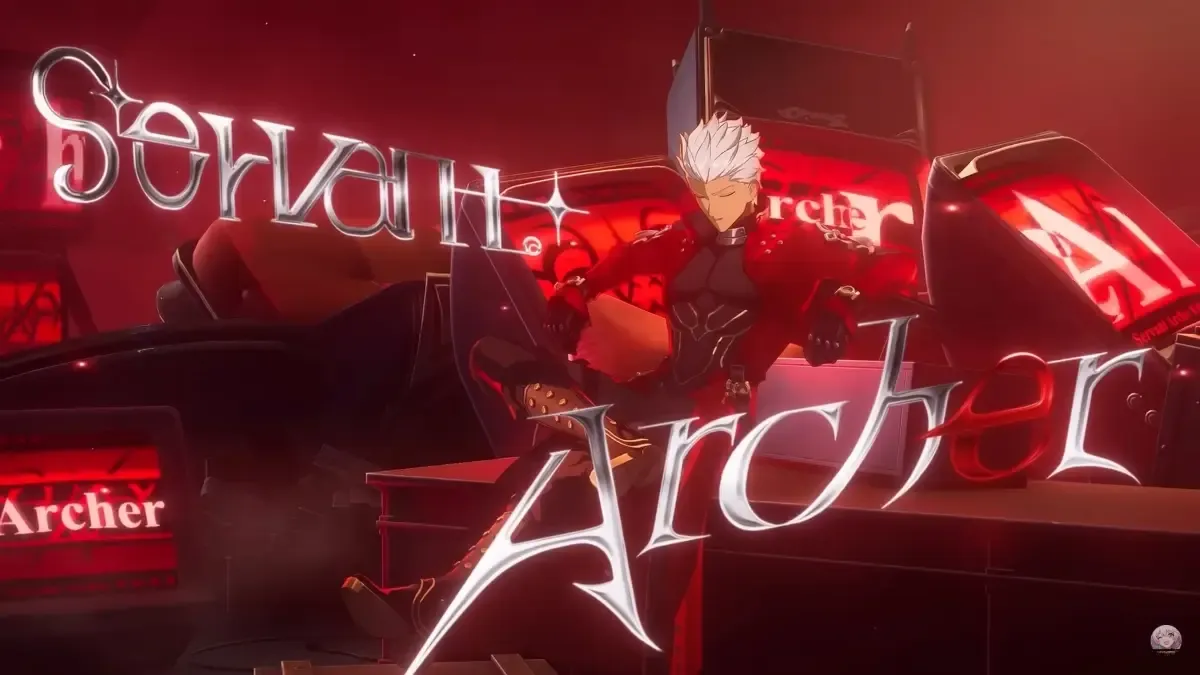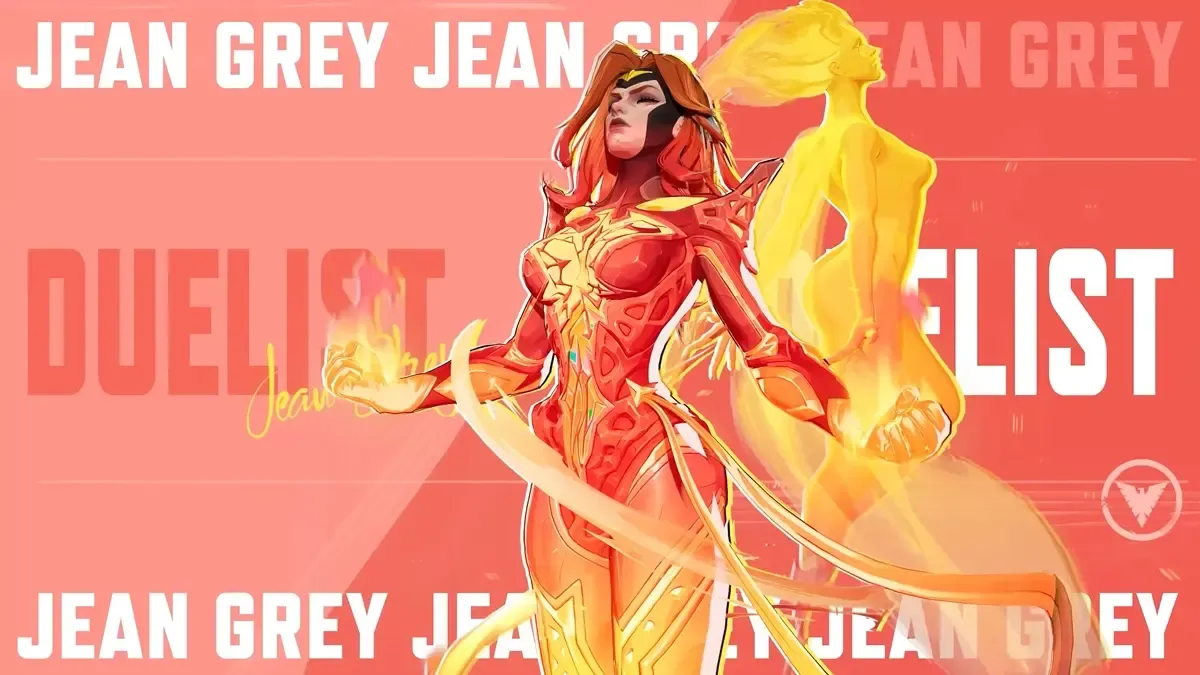Image: Gearbox Software
New Tales From the Borderlands is a beautiful game, but it fails to live up to its highly-beloved predecessor.
If you’re a fan of Gearbox Software’s joke-a-minute looter-shooter series Borderlands, chances are high that you also love Tales From the Borderlands - an adventure game that sticks out like a sore thumb in the franchise for all the right reasons. Unlike its action-packed siblings, Tales From the Borderlands ditched the guns and grenades for a comedic adventure where every choice you make has severe consequences on the game’s cast of unknowns. The game became a tragically underappreciated classic, but after years of fans clamouring for a sequel, we’re finally getting one - sort of.
New Tales From the Borderlands is a spiritual successor to Telltale Games’ 2014 adventure game, with development shifting over to the team at Gearbox for a brand-new story featuring a brand-new cast. While the sequel is gorgeous to look at, it still falls short of its predecessor with its awkward humour, derivative story and low-stakes choices and consequences. While I eventually grew attached to this rambunctious cast of characters and the surprisingly grounded nature of their struggles, this sequel suffers from the same unfunny dialogue and hamfisted writing that has plagued every Borderlands entry since Borderlands 2.
Let's get you up to speed
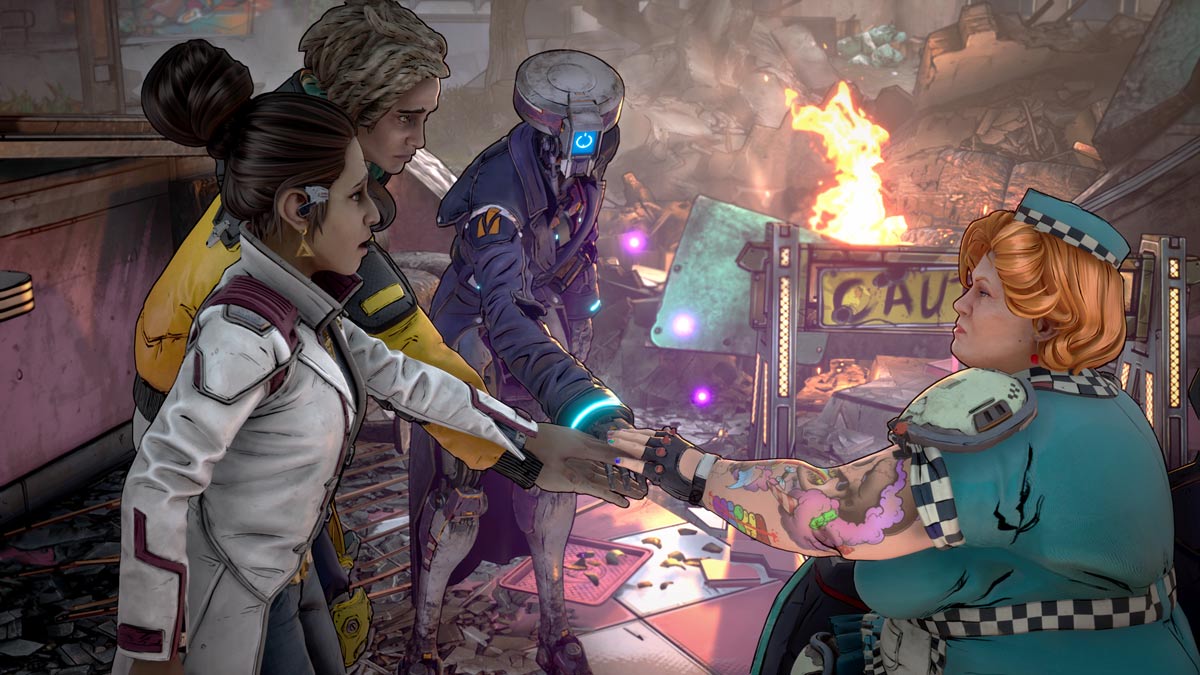
New Tales From the Borderlands picks things up a year after Borderlands 3, with the death of a certain Siren still rippling throughout the universe. Borderlands games typically revolve around massive capitalistic companies like Atlas and Hyperion that are hellbent on squeezing entire planets for pennies, and this game is no different. In New Tales, the weapon manufacturer Tediore (whom fans will remember as one of the trilogy's many gunmakers) begins an invasion of the planet Promethea. And the people of Promethea will remember that.
You’re quickly introduced to a pleasantly slim main cast here: Anu, a very anxious scientist trying to make the universe better, her brother Octavio, who’s desperately trying to make the in-universe equivalent to Forbes’ 30 Under 30 list, and Fran, the crotchety owner of a frozen yoghurt shop with massive anger issues. The game rotates between this trio of playable characters as they slowly converge to face down a Tediore invasion on Promethea, and set out to unlock a vault filled with treasures - which, if you’re a Borderlands fan, sounds like a boilerplate plot for the franchise.
While ‘misfits who don’t get along try to save the universe’ isn’t the most original premise, Anu and Octavio’s complex relationship as siblings shines here. Anu is an overbearing sister who looks down on her brother for not leaving home with her, while Octavio bears a grudge against his sister for not trusting that he'd make good on his lavish ambitions. Fran is a little more disconnected from the two by comparison, only entering the fray as Octavio's employer at her frozen yoghurt store. It took very little for me to become invested in fixing Anu and Octavio’s relationship through their choices, but it was harder to connect to Fran, who never stopped feeling like an outsider to their story despite having equal screen time.

A lot of people are going to be turned off by this game because of its flawed protagonists, but I really think that’s down to the writing and not the characters themselves. Tales From the Borderlands was also filled with immoral, annoying people - but we connected to them because that game had heart, great performances and really good writing to pull it all together. Seeing as this sequel plays out like a really long movie interrupted by the occasional choice or exploration sequence, it’s really important that players are able to buy into these characters, their conversations and their personal stakes.
That didn’t happen for me until well into the story’s final hours. This isn’t the fault of the main cast - when it comes to bringing the game’s most emotional sequences home, they knock it out of the park. They’re just forced to string together very unnatural dialogue most of the time, resulting in wooden conversations that sound like the trio is rehearsing lines at each other instead of talking like real people. Dialogue is stagnant, much too often filled with long, awkward pauses, and jokes that fall so flat it’s a wonder they made it into the final game at all. You’ll care about these characters eventually, but it takes time and a deep well of patience to get to that point.
I do, however, want to point out how rare it is that we see one Indian protagonist lead an entire videogame, let alone two. That’s pretty cool.
This action will have consequences

Gearbox calls New Tales From the Borderlands a ‘spiritual successor’ to Telltale's 2014 game and not a sequel, cementing the ‘Tales From the Borderlands’ series as an anthology that explores smaller players in the Borderlands universe one story at a time. Telltale Games came up with a really fun every-choice-matters formula back in its heyday that it subsequently beat to death, but it was still in its prime when it put out the original Tales. This game was made by an entirely different team and while Gearbox had a lot to live up to, it still captured the original game’s style pretty well.
This game plays out like a very, very long choose-your-adventure movie where you get to decide what your characters say or do. Anu, Octavio and Fran’s decisions will decide how tight-knit the trio becomes in the later chapters of the game, and how they treat each other during the story. Occasionally, the game’s overlong cutscenes will be broken up by exploratory sequences where you get to poke around environments on foot to complete an objective. Each character has a specific gimmick going for them during these segments - Anu has tech-y glasses that allow her to scan objects for clues, Octavio has a smartwatch that lets him hack objects and dig up dirt on his cohorts, and Fran has a hoverchair that can other punch things or freeze them solid.
There’s a balance to strike between actual gameplay and QTEs that pop up while characters trade barbs on screen, but New Tales From the Borderlands misses the mark. After hours spent watching inane attempts at banter and frantically mashing buttons during stretched out QTE sequences, I was practically begging for the ability to just walk around and look at things on my own time. These moments happen far too rarely during gameplay, and mostly consist of solving very easy puzzles before moving on to the next string of cutscenes. There is a bit of incentive in taking your time when they come up though, if only to find little Vaultlanders figurines to use during the game’s surprisingly fun fighting minigame.
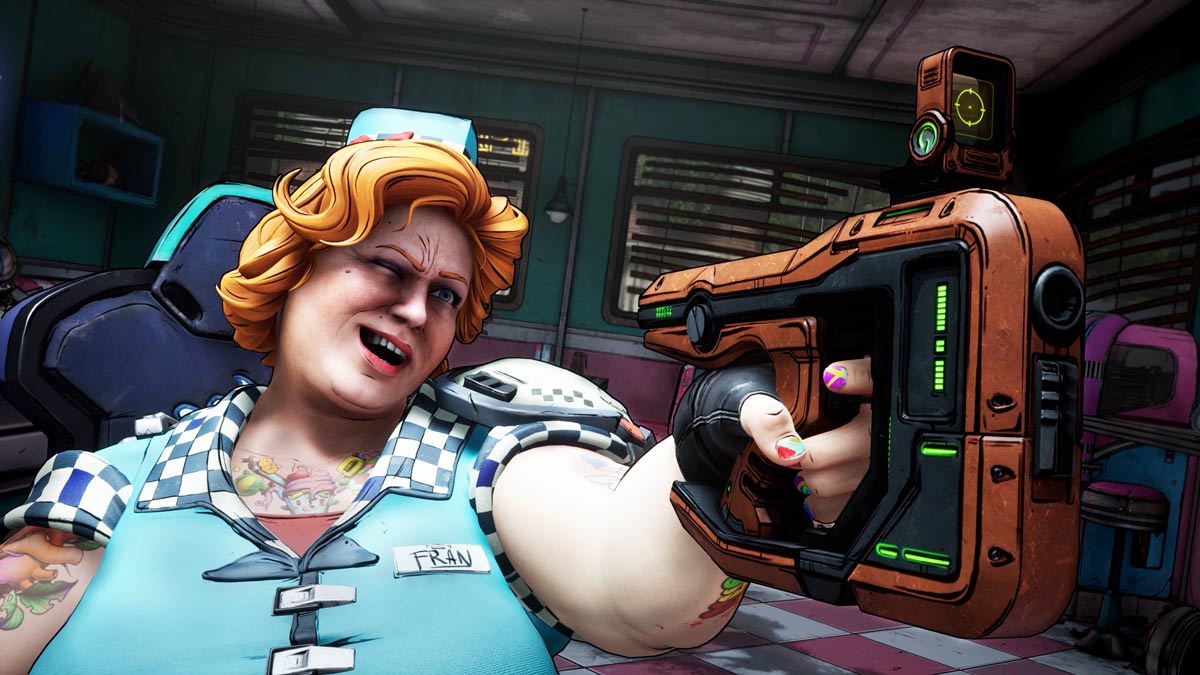
You can also find money to buy skins at various vending machines, just like the mainline games, and they're just as spectacular here. My trio was constantly switching up their wardrobe just because I couldn’t settle on what looked best on them. Visually, this game stands shoulder-to-shoulder with Borderlands 3 with its breathtaking environments, detailed textures (especially on clothes!) and sci-fi art design. The series has managed to keep its cel-shaded identity without sacrificing graphical fidelity, and it shows. The game’s motion capture performances are pretty great, too - you’d never guess the whole project was undertaken during the pandemic.
The game juggles choices and consequences pretty deftly. You’re often presented with very difficult dialogue and strategy choices to make at key points in the story, and that struggle is exactly what makes narrative games like these so great. It’s strange then, that the game seemingly abandons the importance of these choices in a final chapter that mostly consists of things happening to you, and not because of you. Life is Strange: True Colours is a great example of a game in this genre that made its choices feel much more meaningful, with most of them circling back to the player in the end with major consequences. It also achieved a balance between dialogue choices and exploration, in a way that this game simply does not.
Verdict

New Tales From the Borderlands is a bit hard to sit through sometimes. Its grounded story relies on players investing heavily in the core protagonists’ emotional stakes, but that won’t happen for a good long while considering how incredibly annoying they are. The forced, unfunny banter shoved into every line of this story doesn’t help either, though a few characters are consistently hilarious - such as Loui3, a sociopathic assassin droid with an inexplicable Kiwi accent. The trio does grow on you if given a chance, but the first half of the game feels so clumsily plotted that some players might not bother to do so.
Besides some brief texture pop-in issues, this is still the best Borderlands has looked in a long time, and I’m fully behind a new Tales game popping up after every mainline entry to explore more of this bonkers universe. The premise behind this is really fun - a band of misfits trying to save the universe rarely fails to make a compelling story - but it falls short on execution. Borderlands fans might still enjoy seeing the insanity of this universe play out from a different perspective. Otherwise, I’m not sure who this game is for.

